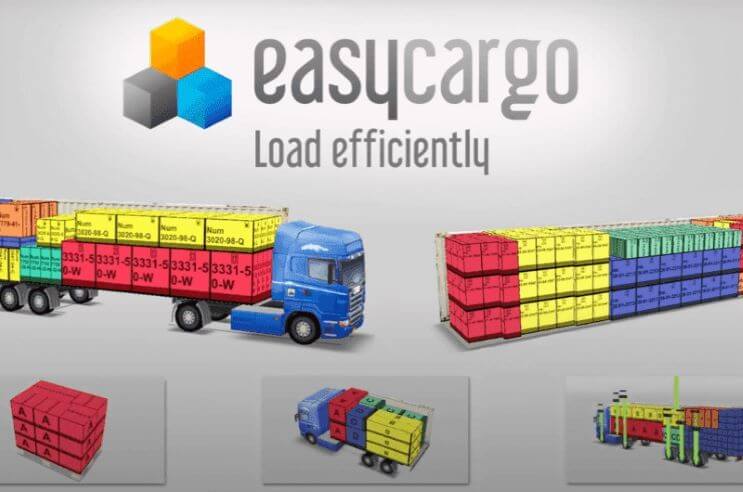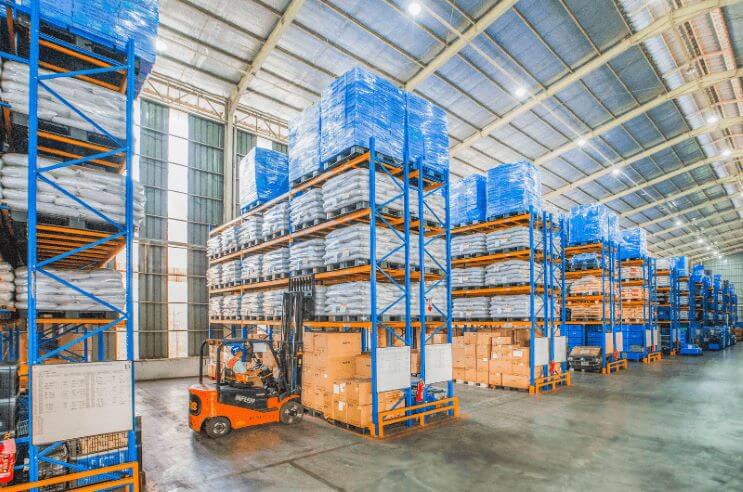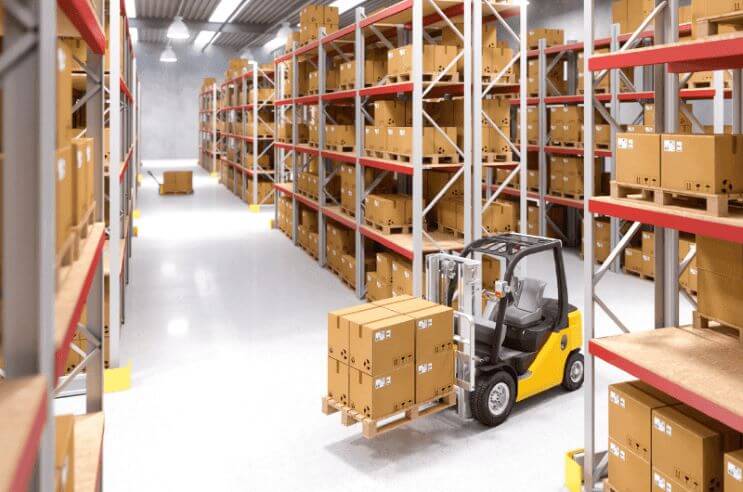From Carts to Drones: The Story of a US $10.6 Trillion Market Size Logistics Industry
Throughout history, logistics has been the unseen motor pushing the global movement of resources, information, and products. Logistics has come a long way, from up to 12 months of delivery through the Silk Road to 2 or 3-day delivery by logistics companies worldwide. Everything happened thanks to inventions, flexibility, and scientific advances.

Source: www.canva.com
Comprehending this evolution can help you understand how economies have expanded, communities have matured, and enterprises have prospered. Let’s discover the interesting history of logistics and see how it went from simple beginnings to the complex networks that make the modern world work.
History of Logistics
If we trace logistics back to the 18th century, we can find that the logistics definition was first used in a military context. But logistics was here before that. Check out the most important milestones of the history of logistics management, from ancient history to the 20th century.
Antiquity: Origins of Logistics
Logistics has its origins in the ancient civilizations of Mesopotamia, Egypt, China, and Rome. By creating highly developed transportation and storage systems to support their armies, maintain their expanding cities, and promote trade, these ancient societies set the foundation for modern supply chains and logistics.
They built warehouses along important trade routes and carefully planned strategic routes using a variety of carts, ships, and pack animals. These early integrated logistics not only helped empires grow but also made it possible for people to trade products.
Middle Ages: Guilds and Trade Routes
Trade routes and guilds played a major role in the exchange of goods during the Middle Ages. Guilds managed logistics services and standards of manufacture. Returning trade routes, such as the Silk Road, promoted economic expansion and intercultural dialogue. Markets developed as hiveminds of trade where products were exchanged and distribution networks started to take shape. These developments laid the foundation for the centuries-long commercial revolutions, such as the transition from feudalism to a more market-oriented economy and the rise of merchant capitalism.

Source: www.canva.com
18th Century: The definition of logistics and the Industrial Revolution
When it comes to transporting supplies and goods, the ancient Greeks and Romans were familiar with the idea of logistics, especially in military settings. However, the Prussian general Carl von Clausewitz used the term “logistics” in the late 18th century to describe the duties involved in the maintenance, transportation, and provisioning of troops. He was the first one who answered the question “What is logistics” in terms of definition. He defined logistics as “the practical art of moving armies.”
After the year 1700, the first steam engine was built and used for pumping water. These mechanisms were followed up on after 1760 by the English mechanic James Watt, who perfected the steam engine and thus started the Industrial Revolution. Thanks to this discovery, the first steam locomotives were built and began delivering goods across continents.
Tip: Do you want to learn more about the history of railway transportation? Read our article about the evolution and influence of rail transportation on global logistics.

Source: www.canva.com
20th Century: Globalization and mass production
The official study and investigation of logistics began in the 20th century, reflecting the increasing awareness of its crucial significance in contemporary trade. Globalization and mass production increased at this time, requiring the use of increasingly advanced logistics management techniques, defining the future of the logistics industry. For example, among the advanced logistics management techniques is the Just-In-Time (JIT) inventory management method, which involves delivering materials for production only when they are needed. This reduces the amount of inventory and storage costs.
Real-time logistics optimization and tracking were made possible by the revolutionary changes in communication and coordination brought by technologies such as the telephone, the radio, and the internet.
Aviation officially began with the Wright Flyer, the Wright brothers’ invention of powered flight in 1903. On December 17, 1903, Orville Wright piloted the Flyer and accomplished a historic 12-second flight at Kitty Hawk, North Carolina, traveling 36.5 meters (120 feet) in the air. Thanks to this event, the 20th century is also associated with the beginning of air service logistics.
Tip: Find out more about the history of air freight transportation.

Source: www.canva.com
The Present Era of Logistics
The brief history of logistics showed that it took many centuries to shape logistics into what we know today, a huge industry with a market size of around US $10.6 trillion in 2023 (expertmarketresearch.com, 2023). The market size is more than half of the entire value (market cap) of gold (US $16 trillion).
Nowadays, logistics is driven by new technologies and software, which help logistics companies deliver cargo in a matter of days. These are the most important general logistics systems that are used today.
Internet of Things (IoT) in Logistics
One of the modern-era milestones for logistics was IoT. IoT is a network of connected objects that have sensors and software installed so they can exchange and gather data. These gadgets, which may be anything from GPS trackers on transit vehicles to sensors on warehouse shelves, make it easy to collect and analyze data. This helps your business plan the best routes, avoid delays, and guarantee that customers receive their orders on time.
IoT applications in logistics are essential because they make it possible to seamlessly integrate cargo with digital systems, which transforms the way products are tracked, monitored, and managed along the supply chain. Conventional tracking techniques may depend on manual input and periodic updates, but IoT technology allows for real-time, automated, and more accurate tracking. IoT sensors offer useful information about the location, state, and status of assets in a variety of settings, including warehouses and transit vehicles.
One great example: Pfizer, a leader in the pharmaceutical sector, has decided to deploy IoT sensors for supply chain monitoring to control temperature in real-time during the shipment of vaccines during the COVID-19 pandemic. Thanks to this, they were able to deliver medications in proper conditions.
Tip: IoT is revolutionizing logistics in many ways. Read about all of them in our article.

Source: www.canva.com
Logistics Software
Logistics software can help your company solve daily issues. In addition to many other things, it offers solutions for order fulfillment, transportation optimization, and inventory management.
Load Planning Software
Load planning software helps you maximize cargo space usage and reduce transportation costs. The software plans cargo load in transportation vehicles, such as containers, trucks, and others, in the most efficient manner possible. It effectively organizes shipments, ensuring the safe and economical transportation of commodities by determining variables like weight distribution, cargo dimensions, and vehicle capacity.
One great example of load planning software is EasyCargo. This software is easy to use, saves space and time, and provides the best 3D visualization. And even more? It saves you money. By optimizing the loading process, you can maximize the use of transport space and reduce transporting empty space. Additionally, through planning, you can also prevent product damage.
Tip: Try EasyCargo for free.

Container Tracking Systems
You can track the flow of shipments and shipping containers in real-time with the use of a logistics tracking system. Put more simply, you may see the precise location of the monitored shipment at any given time thanks to the usage of tracking technologies like GPS, RFID (Radio Frequency Identification, a technology that allows tags attached to objects to be automatically recognized and tracked), or satellite tracking.
Tip: Read about the best online container tracking systems available.
Warehouse Management System
A warehouse management system (WMS) is made up of logistics software and procedures that enable your business to manage and oversee warehouse operations from the moment materials or items are brought into the warehouse until they are removed. It is expected that the size of the worldwide WMS market will increase from US $3.45 billion in 2024 to US $9.11 billion in 2032 (fortunebusinessinsights.com, 2024).
Another factor connected with a well-managed logistics supply chain is well-trained warehouse workers. The need for warehouse labor is increasing as warehouses turn into complex distribution and logistics hubs. Over the past ten years, the number of warehouse workers in the US has nearly tripled in the warehouse industry. There were 707,000 workers in 2013, according to the US Bureau of Labor Statistics (BLS). In 2023, the number increased to 1,933,000. Find out which skills are essential for warehouse workers and how to build them.

Source: www.canva.com
Last-Mile Delivery software
Last-mile Delivery software focuses on optimizing the delivery processes from the last distribution point to the customer. This software typically includes features for delivery management, real-time shipment tracking, route optimization, and delivery driver planning. The goal is to deliver goods or services to the customer in the shortest time and at the lowest cost possible.
Tip: Do you want to fully understand the importance of last-mile delivery? Read the article about the 5 biggest challenges and innovations in last-mile delivery.

Source: www.canva.com
Logistics in the Future
It is expected that the logistics sector will reach a US $18.4 trillion market size by 2032 (expertmarketresearch.com, 2023). The growth will be driven by higher demand from growing e-commerce businesses and advanced technologies. Let’s see what innovations and technologies the logistics industry will bring in the future (or which it is already beginning to utilize).
Autonomous vehicles and drones
To improve speed and efficiency while lowering traffic and pollution, last-mile deliveries in metropolitan areas will be made using both aerial and ground-based drones. Long-haul freight will be transformed by self-driving trucks, which will also save on labor expenses and increase safety.
Although it is expected that the first fully autonomous cars will emerge by 2035, their widespread use is unlikely to occur for at least another 20 years. Experts in this field agree that autonomous vehicles are the future of logistics, but the path to their final version will take some time.

Source: www.canva.com
Smart Warehouses
Warehouses will develop into intelligent, highly automated spaces. Picking, packing, and inventory management will be handled by robots and automation, freeing up humans to work on higher-value duties like supervision and troubleshooting.
The market for automation as a whole is expanding quickly. According to knowledgeable sources, robot shipments could rise by as much as 50% annually by 2030, with warehouse automation expanding at a rate of more than 10% annually (mckinsey.com, 2023).

Source: www.canva.com
IoT in the Future of Logistics
It is expected that around 2030, supply chains and logistics will be ultra-efficient. The progress will be driven by IoT, supported by predictive algorithms and enhanced data analytics. This degree of accuracy will raise customer satisfaction and cost-effectiveness. As you can see, the combination of IoT and logistics will be pressing on for at least a few upcoming decades.
You can see that logistics is evolving at an incredible pace. And although it might seem that it can’t bring anything new anymore, the opposite is true. In the future, the entire transportation chain will become even more optimized and efficient, thanks to new and improved technologies.




